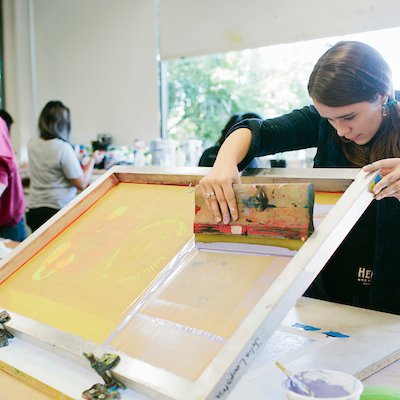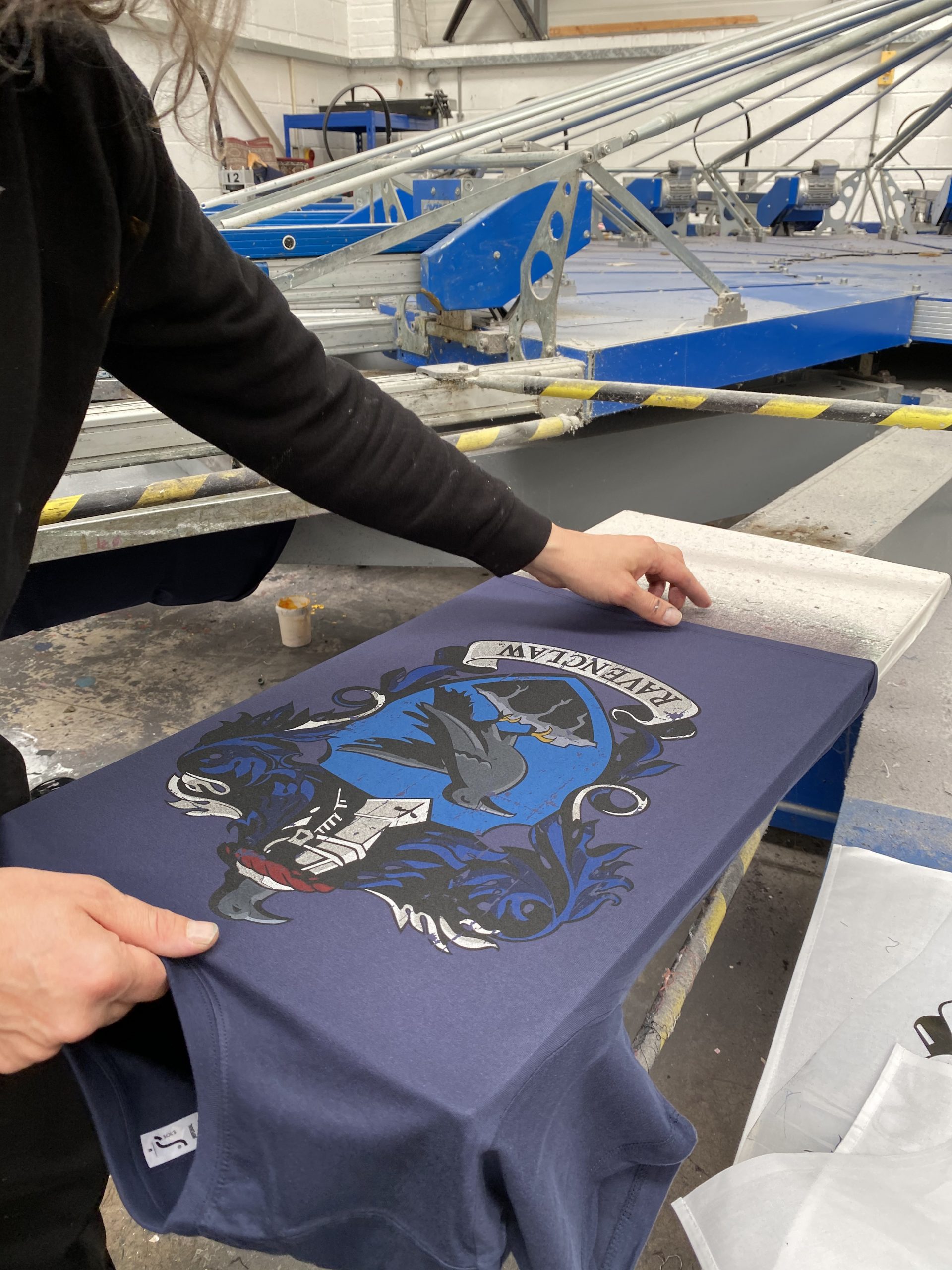The Necessary Overview to Recognizing Screen Printing and Its Versatile Makes use of
Screen printing has an abundant background that goes back to ancient times, developing into an advanced method utilized throughout numerous markets today. This guide checks out the ins and outs of the screen printing procedure, outlining its applications in home, style, and marketing decoration - 10:9 Design Screen Printing Texas. Comprehending these basics can open up creative potential for both business and imaginative projects. The complying with sections will certainly expose necessary ideas and techniques to boost one's screen printing undertakings
The Background of Screen Printing
Screen printing has roots that trace back centuries, its evolution reflects the artistic and technical innovations of different cultures. Coming from old China, the strategy was originally utilized for decorating fabrics and later spread to Japan, where it became integral to Ukiyo-e woodblock printing. The technique shifted to Europe in the 18th century, where it obtained popularity amongst artisans and business printers. The development of picture solution in the 20th century changed screen printing, permitting more intricate layouts and better effectiveness. Musicians like Andy Warhol even more propelled its popularity, utilizing the tool to develop iconic jobs that blended commercialism and art. By the late 20th century, screen printing had actually established itself as a flexible strategy, employed in vogue, advertising and marketing, and art. Today, it remains to develop, incorporating electronic technology and expanding its applications across different sectors.
The Screen Printing Refine Explained
Screen printing transforms imaginative visions right into substantial designs through a series of accurate actions. Originally, an image is developed and afterwards transferred onto a screen, generally made from great mesh fabric extended over a structure. A light-sensitive emulsion is related to the screen, which is exposed to light, solidifying in areas not covered by the picture. After rinsing the unhardened emulsion, a pattern is developed.
Next, the screen is put over the substrate, whether it be fabric, paper, or another material. Ink is then pushed through the open locations of the pattern making use of a squeegee, transferring the style onto the substrate below. This procedure can be duplicated for numerous shades, needing separate screens for each tone. Lastly, the printed item is cured using heat to assure the ink sticks appropriately, resulting in a resilient, vibrant layout all set for use.
Types of Screen Printing Techniques

Additionally, specialty methods, such as discharge screen printing, get rid of color from the material to produce softer prints, while aluminum foil screen printing applies metallic foil to achieve a glossy finish (10:9 Design near me). Each method uses unique qualities, satisfying different creative demands and manufacturing ranges, eventually broadening the possibilities within the screen printing domain
Applications of Screen Printing in Numerous Industries

Furthermore, the signage and advertising and marketing markets make use of screen printing for producing captivating screens and banners. This method enables vibrant shades and elaborate designs that catch attention. In electronics, screen printing is used for applying conductive inks to circuit boards, important for part links. The home style industry welcomes screen printing to create distinct styles on fabrics and wall art. On the whole, screen printing functions as an important tool throughout diverse areas, enhancing products with individualized and visually enticing graphics.
Tips for Successful Screen Printing Projects
While taking on a screen printing job, cautious focus to detail can substantially enhance the last outcome. Initially, picking read more top notch materials is essential; this consists of the screen, inks, and substrates. Making use of proper mesh counts can influence ink deposition and detail resolution. Preparation is similarly vital; complete cleaning of displays and appropriate exposure times assure crisp prints.
Next, accurate registration is critical for multi-color prints. Utilizing positioning devices can aid achieve accurate layering. In addition, screening prints on scrap products prior to production assists determine possible concerns without wasting resources.

Regularly Asked Questions
What Products Are Best for Screen Printing on Material?
Cotton and polyester blends are optimal for screen printing on textile because of their resilience and ink absorption. In addition, specialized fabrics like silk or canvas can create distinct textures and surfaces, enhancing the general layout top quality.
Just how Do I Clean and Maintain Screen Printing Tools?
To keep and cleanse screen printing tools, one should consistently clean screens with proper solvents, evaluate squeegees for wear, lube relocating components, and shop all items in a dry, dust-free environment to extend their life expectancy.
What Are the Ecological Influences of Screen Printing?
Screen printing can have significant ecological impacts, consisting of chemical waste from solvents and inks, water usage during cleaning processes, and power intake. Green products and lasting techniques are vital for lessening these adverse results.
Can Screen Printing Be Done in the house Properly?
Screen printing can be properly done at home with the right products and strategies. Enthusiasts can develop top quality prints, though success depends upon their skill level, equipment, and understanding of the process involved.
What Are the Costs Associated With Beginning a Screen Printing Business?

Starting a screen printing business entails expenses for devices, products, and work space. Preliminary expenses typically vary from a few hundred to numerous thousand dollars, depending on the range, high quality of machinery, and preferred production ability.
Screen printing has an abundant history that dates back to old times, advancing right into a sophisticated strategy utilized throughout various sectors today. One more strategy, rotary screen printing, utilizes cylindrical displays, facilitating continual printing on fabric rolls, therefore enhancing performance for large-scale manufacturings. Additionally, specialized techniques, such as discharge screen printing, eliminate dye from the textile to create softer prints, while foil screen printing uses metallic foil to accomplish a glossy finish. In the fashion field, screen printing is widely utilized to develop vibrant styles on clothing, enabling brands to display their special designs. Cotton and polyester blends are perfect for screen printing on textile due to their durability and ink absorption.